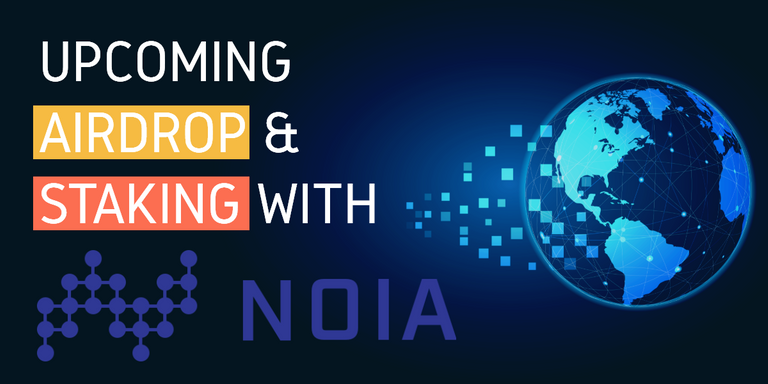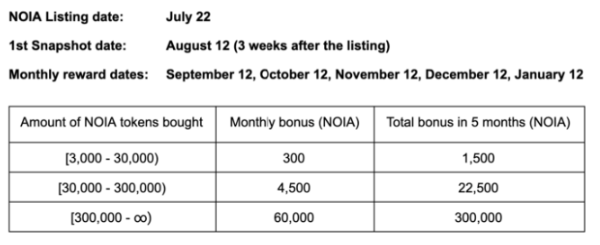
NOIA Network aims to build a programmable internet by creating a global Software Defined Network (SDN) on the public Internet. NOIA seeks to achieve this by utilizing Segment Routing, IPv6, and the blockchain technology. The strength of a decentralized ecosystem is invariably linked to its token. Suppose you own a token of a particular network, do you hold on to it, or do you sell it?
What is the mark of a truly valuable token?
Before you answer these questions, let’s understand the concept of token velocity.
What is token velocity?
Popularized by Multicoin’s Kyle Samani, “Token Velocity” is something that many use to determine the long-term valuation of a particular cryptocurrency. We can’t escape from the fact that the market is full of unnecessary tokens. These tokens serve no other purpose than being just a means for the developers and project creators to raise money via crowd sales. As such, these tokens are suitable only for speculative trading, and as soon as their price is around a certain level, they get sold. Since these tokens have hardly any holding value, they are said to have high velocity.
If you were to define Token Velocity in strictly mathematical terms, then it would look like this:
Token Velocity = Total Transactional Volume / Average Network Value.
If we were to flip the formula then:
Average Network Value = Total Transactional Volume / Token Velocity.
Now, that leads to two conclusions:
- More the token velocity, less the average network value.
- More the transactional volume, more the token velocity.
So, keeping this in mind, let’s go back to the question asked before this section.
If you had a token for a particular network, will you hold on to it, or will you sell it? If the network is valuable, then going by token velocity, it makes sense to hold on to it. However, if the network is useless, then it makes sense to sell it as soon as possible before its value goes to 0.
How will NOIA reduce token velocity?
A project like NOIA will eventually be valuable enough on its own because it solves such a real problem. However, it will take some time to mature on its own. So, to make sure that NOIA doesn’t fall victim to speculation, they needed to do something which will reward users for holding on to their tokens within the ecosystem. They have achieved this by incorporating two mechanisms into their tokenomics:
- Airdrops.
- Staking.
1) Airdrops
NOIA has a Foundational Members Program is an airdrop mechanism that will get triggered on August 12, exactly three weeks after its KuCoin listing. This has been put in place to encourage their investors to hold on to their tokens instead of selling them off.
Under this program, the investors will get NOIA airdropped in their wallet on September 12, October 12, November 12, December 12, and January 12 for a total five bonus months. The number of NOIA airdropped will be as such:
- If you own anywhere between 3,000-30,000 NOIA tokens, you will get a monthly bonus of 300 NOIA for a total five-month haul of 1,500 NOIA.
- If you own anywhere between 30,000-300,000 NOIA tokens, you will get a monthly bonus of 4,500 NOIA for a total five-month haul of 22,500 NOIA.
- If you own >300,000 NOIA tokens, you will get a monthly bonus of 60,000 NOIA for a total five-month haul of 300,000 NOIA. In essence, you get back your initial investment.
Because of this five-month airdrop plan, investors who choose to hold on to their tokens will be handsomely rewarded for their loyalty.
2) Staking
Staking is a mechanism by which holders can lock up tokens within the system. Doing so will make them validators within the ecosystem and will give them unique roles and privileges. NOIA is building a DITEX. A DITEX is a digital marketplace where IP addresses of available SRv6 routers (POPs) are exposed and the transit capacity through these routers can be purchased.
NOIA users can stake a predefined amount of tokens in the Transit coin wallet for running a masternode software. Here are some critical points about staking in NOIA that you need to keep in mind:
- Minimum amount to be staked is 0.01% of the current circulating supply.
- The amount of staked coins must be maintained throughout the whole period of participation.
- For their participation, validators are eligible for payouts from both the validator reward and the dividend candidate pool.
- It must be kept in mind that the reward payout is proportional to the participation rate of the validators. This makes sure that lazy validators are punished for non-participation.
Conclusion
NOIA utilizes airdrops and staking to make sure that it has low token velocity and robust tokenomics:
- The airdrops will reward token holders for not selling off their assets.
- Staking will give another powerful incentive to validators to hold on to their tokens.
By using these principles, NOIA tokens will not fall victim to speculation before the main network matures.

Congratulations @crypto.hype!
You raised your level and are now a Minnow!
Vote for @Steemitboard as a witness to get one more award and increased upvotes!
Hi, @crypto.hype!
You just got a 0.1% upvote from SteemPlus!
To get higher upvotes, earn more SteemPlus Points (SPP). On your Steemit wallet, check your SPP balance and click on "How to earn SPP?" to find out all the ways to earn.
If you're not using SteemPlus yet, please check our last posts in here to see the many ways in which SteemPlus can improve your Steem experience on Steemit and Busy.
So it's like Ethereum but with more market support? Well, good luck with that. Though, I doubt that luck will do anything for this project.
Partaking in this one for sure! All of us want x15 faster internet ~ Find it interesting that they're not going along the route of rewarding early IEO Investors but offering incentives to long-term hodlers
Today is the big day! Valuable information here, thanks for sharing this
Another solid update @crypto.hype
NOIA network ... from the very first time I've read about this project over year ago, I had an impression that they are here to stay for long.
Cheers
Piotr